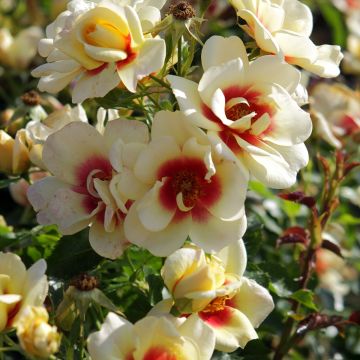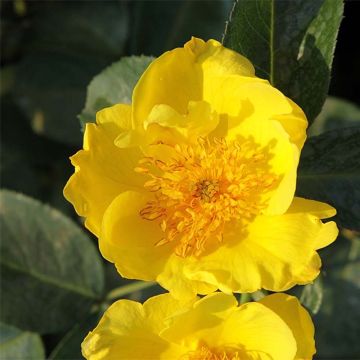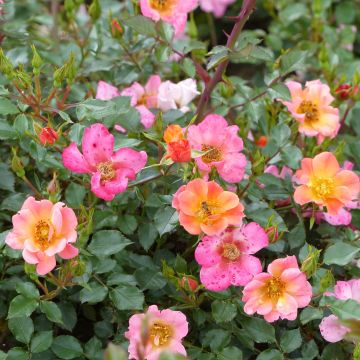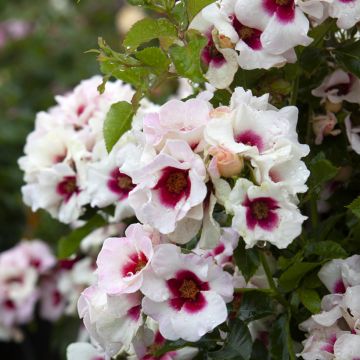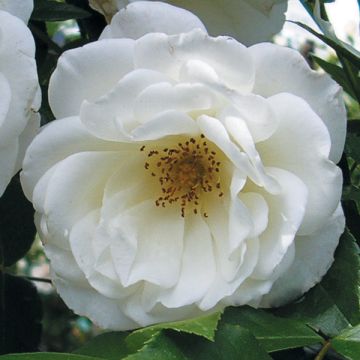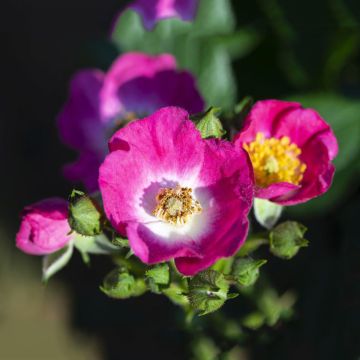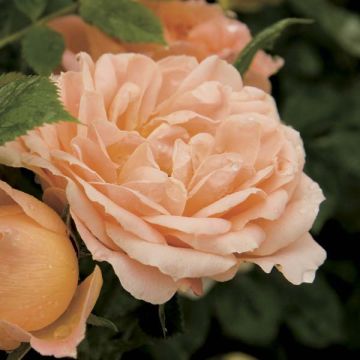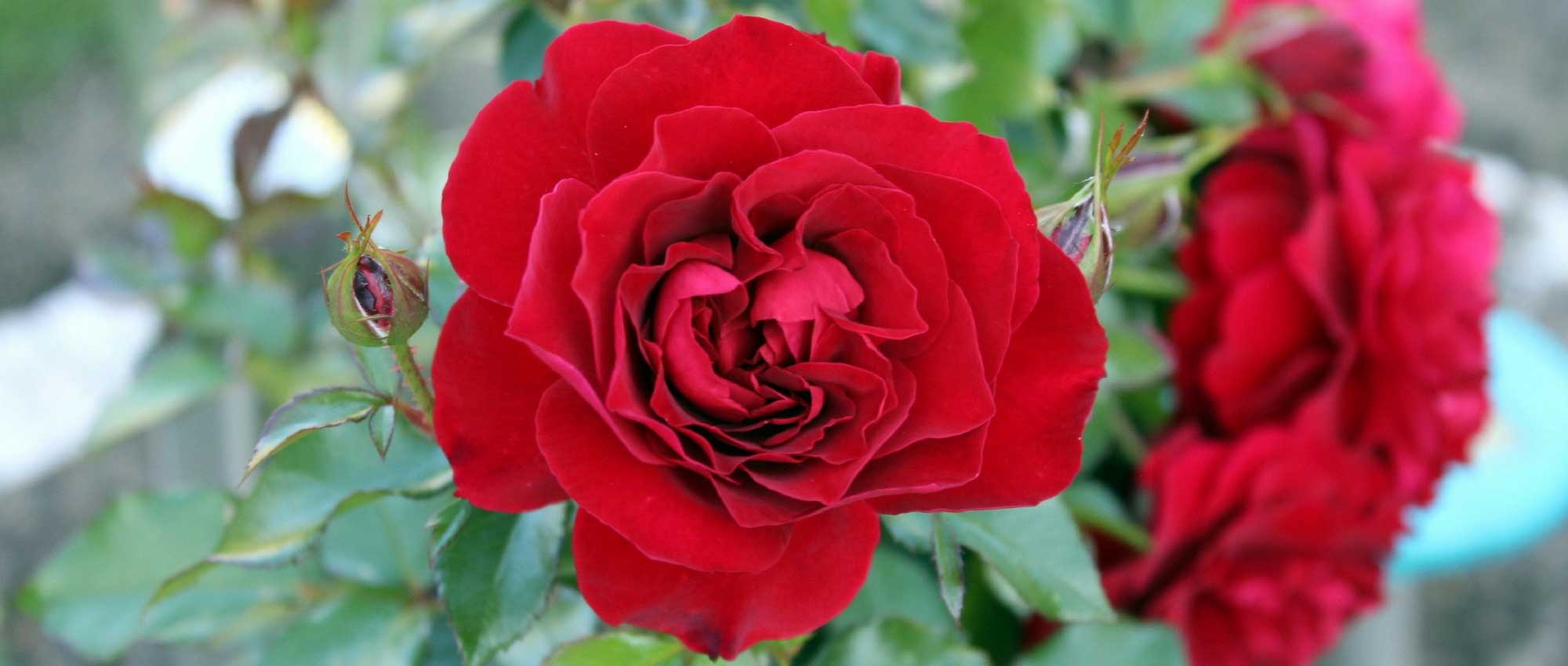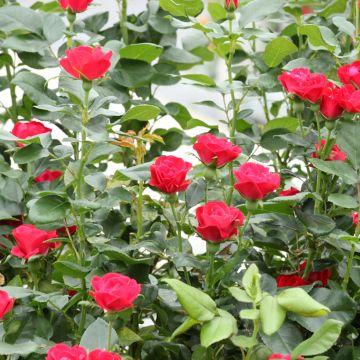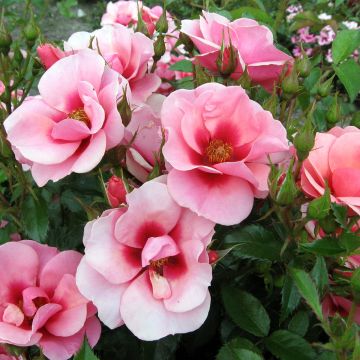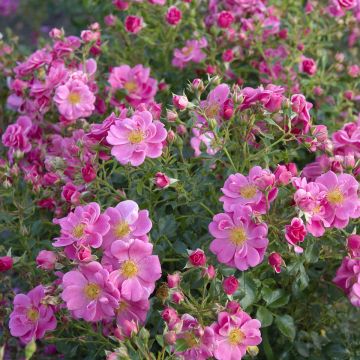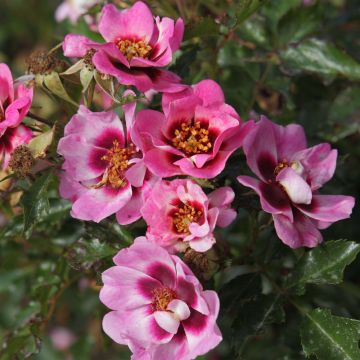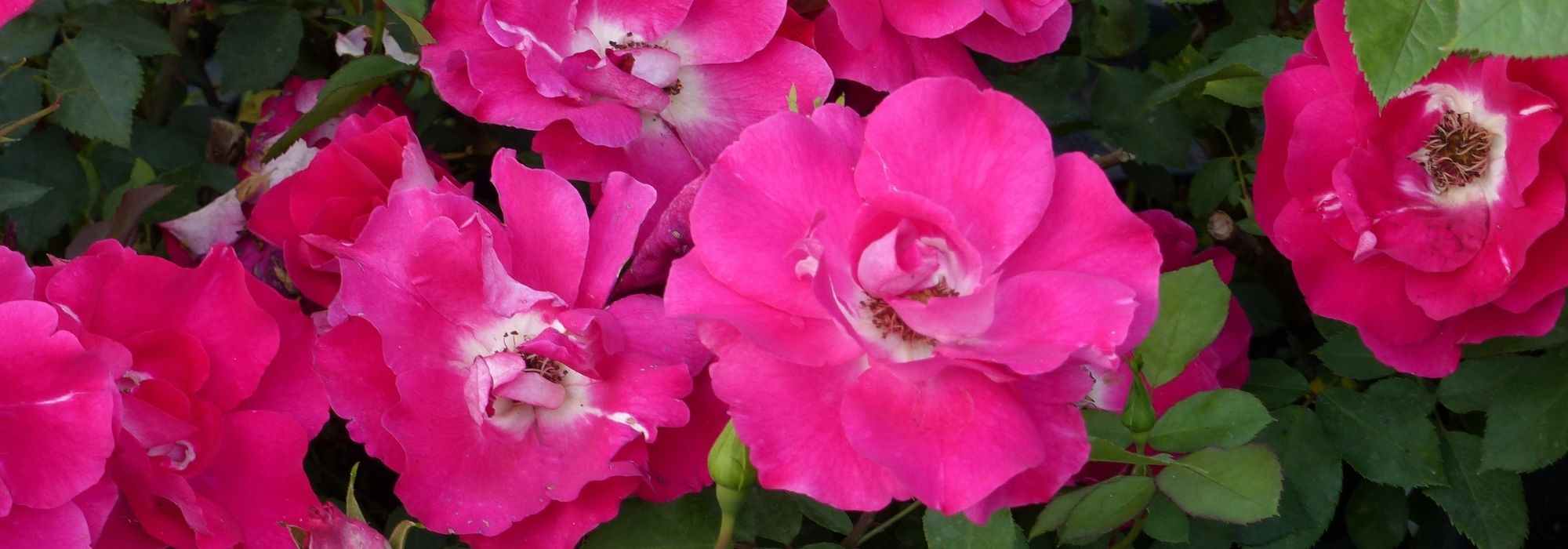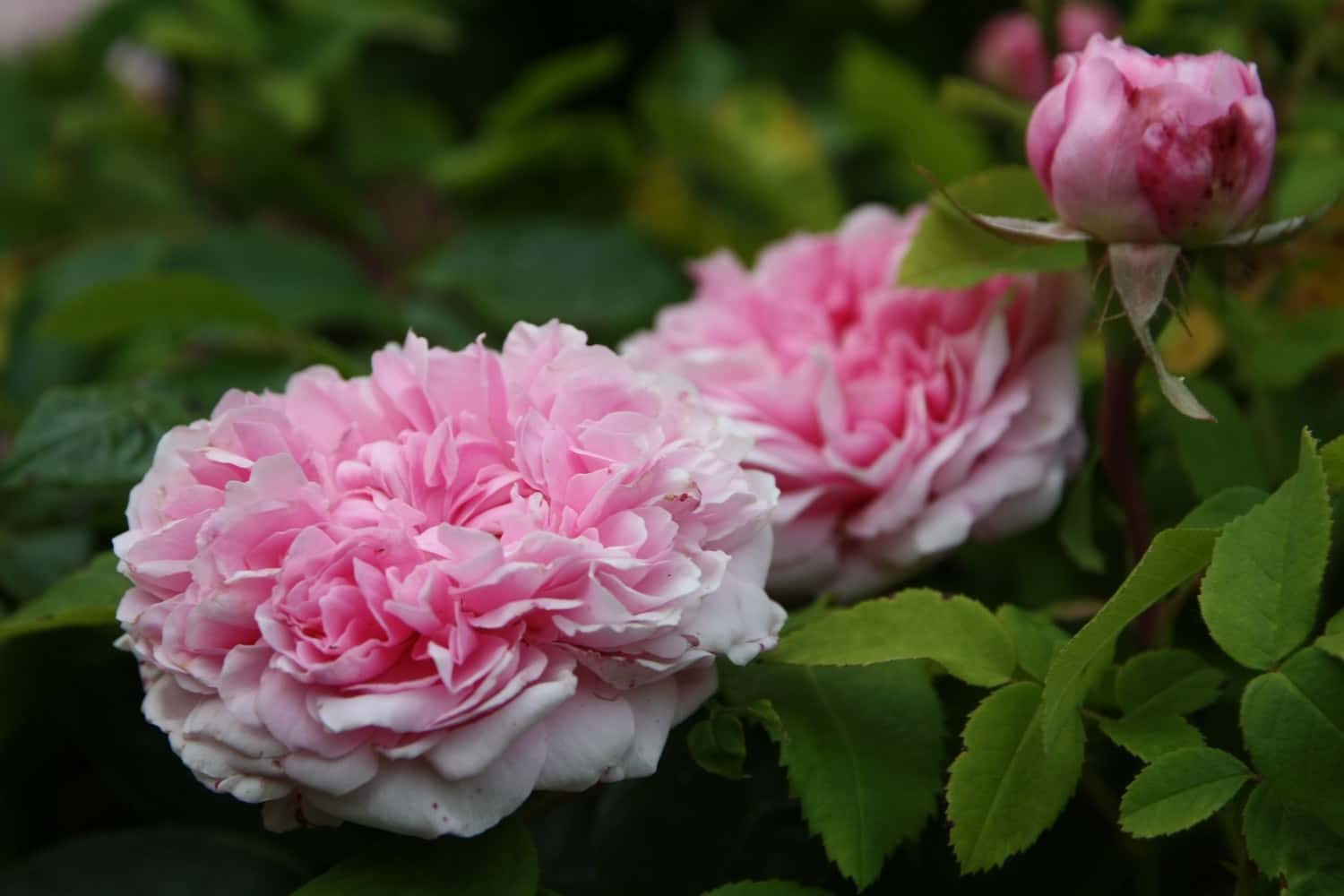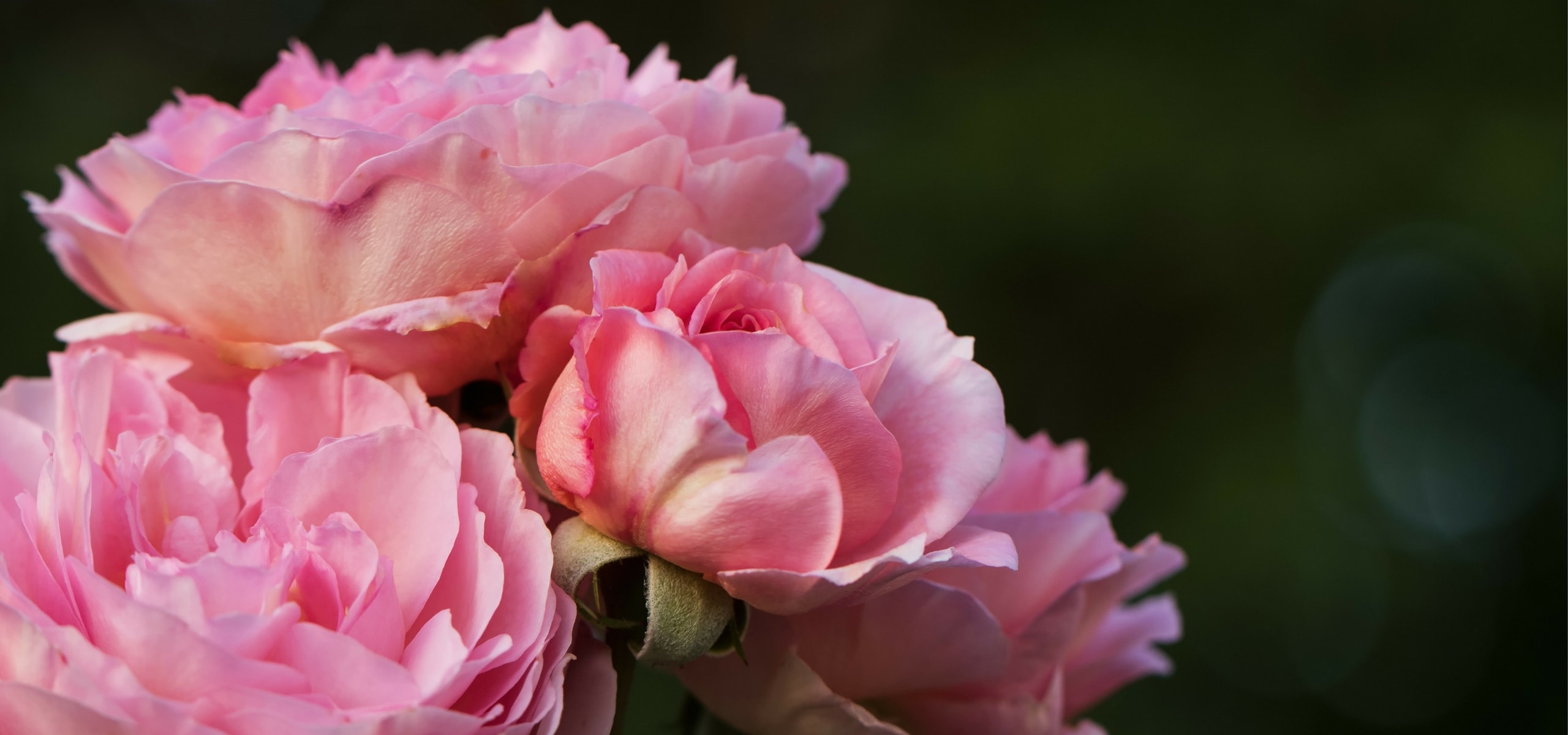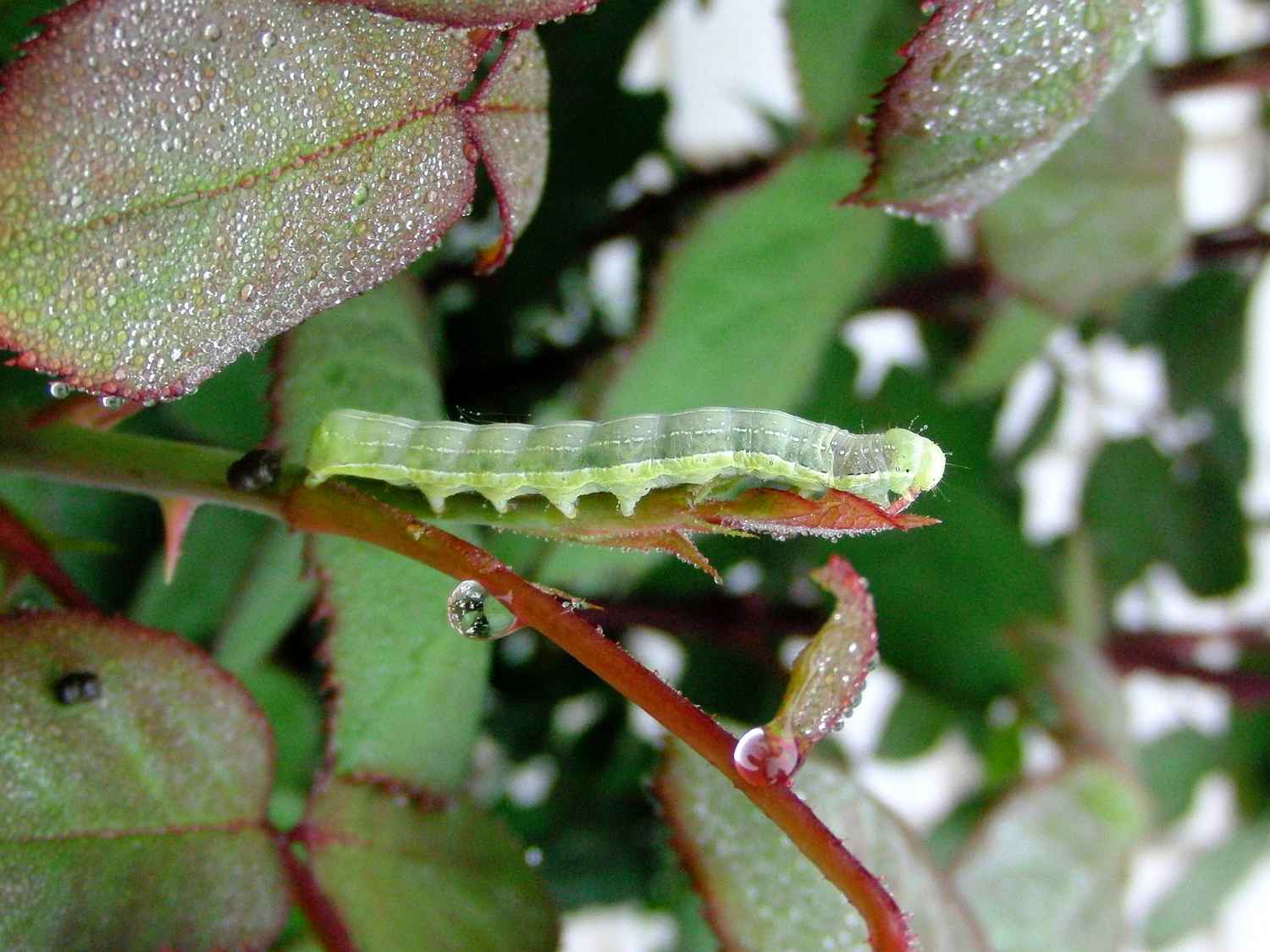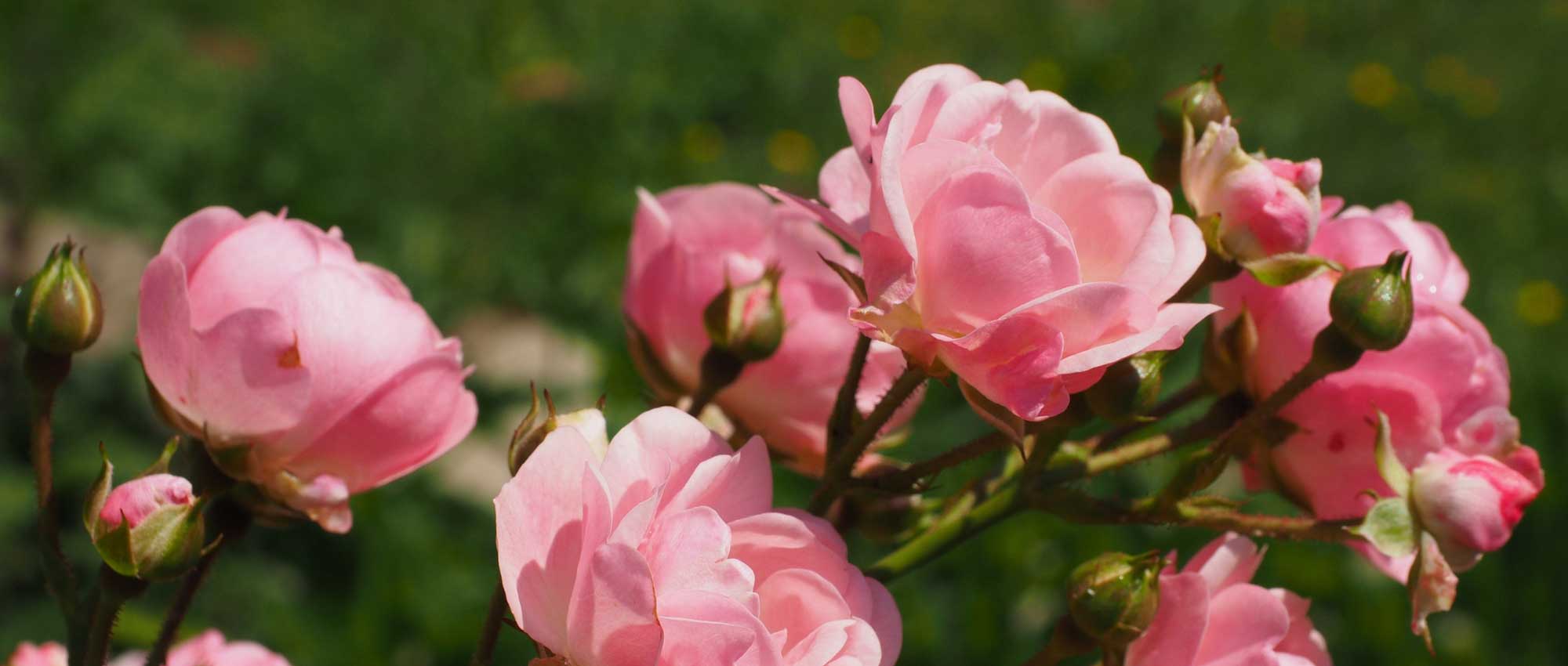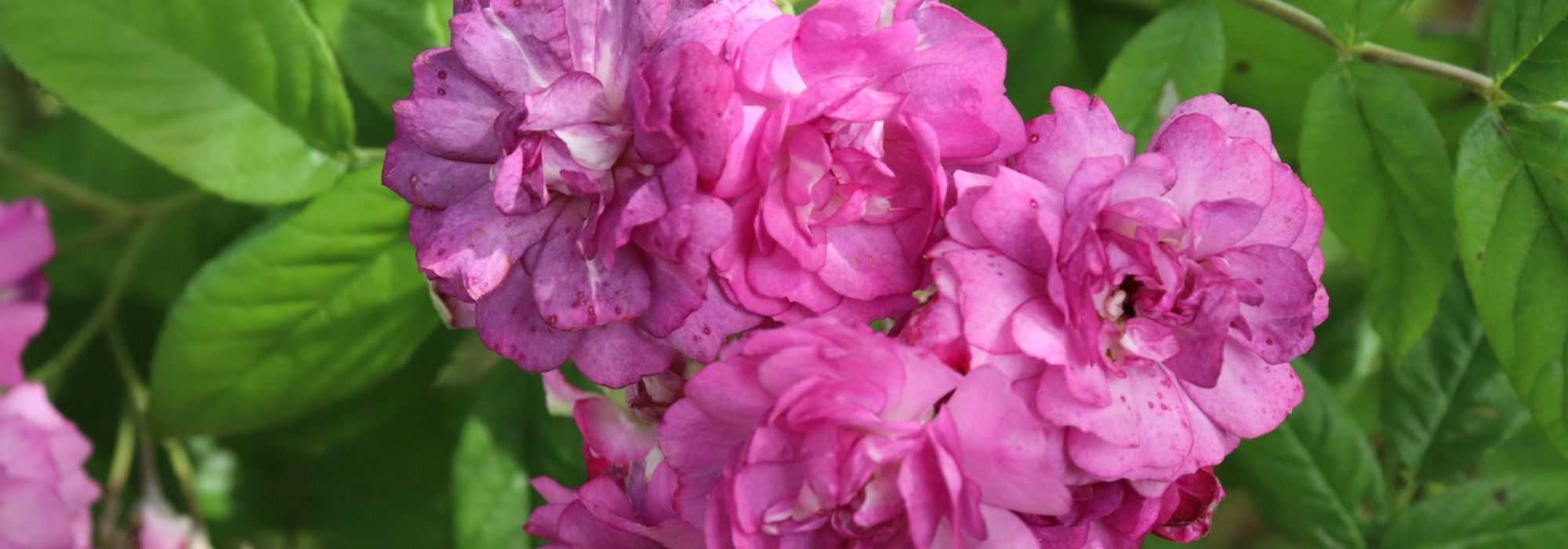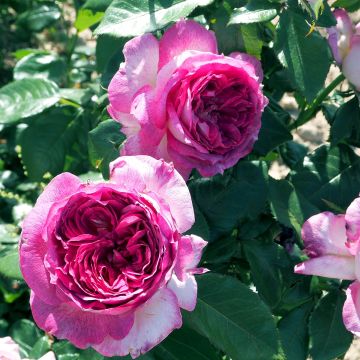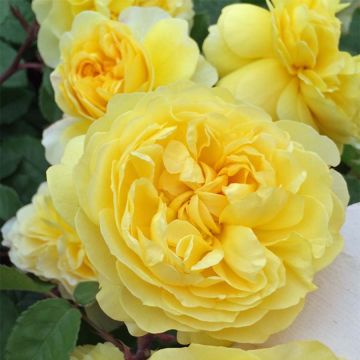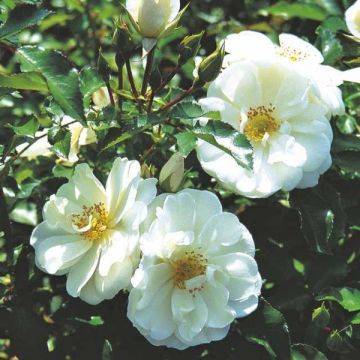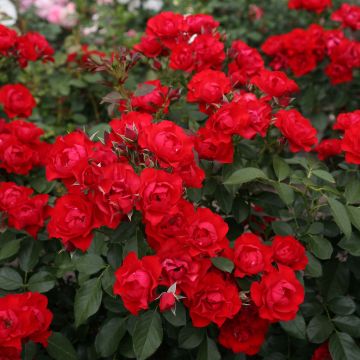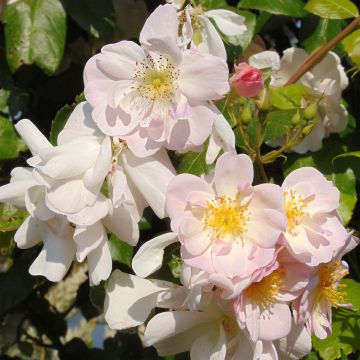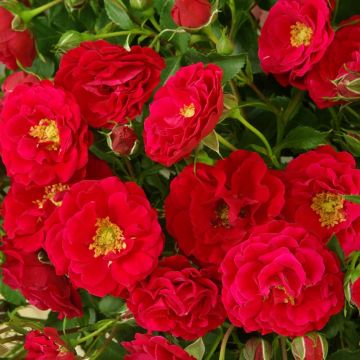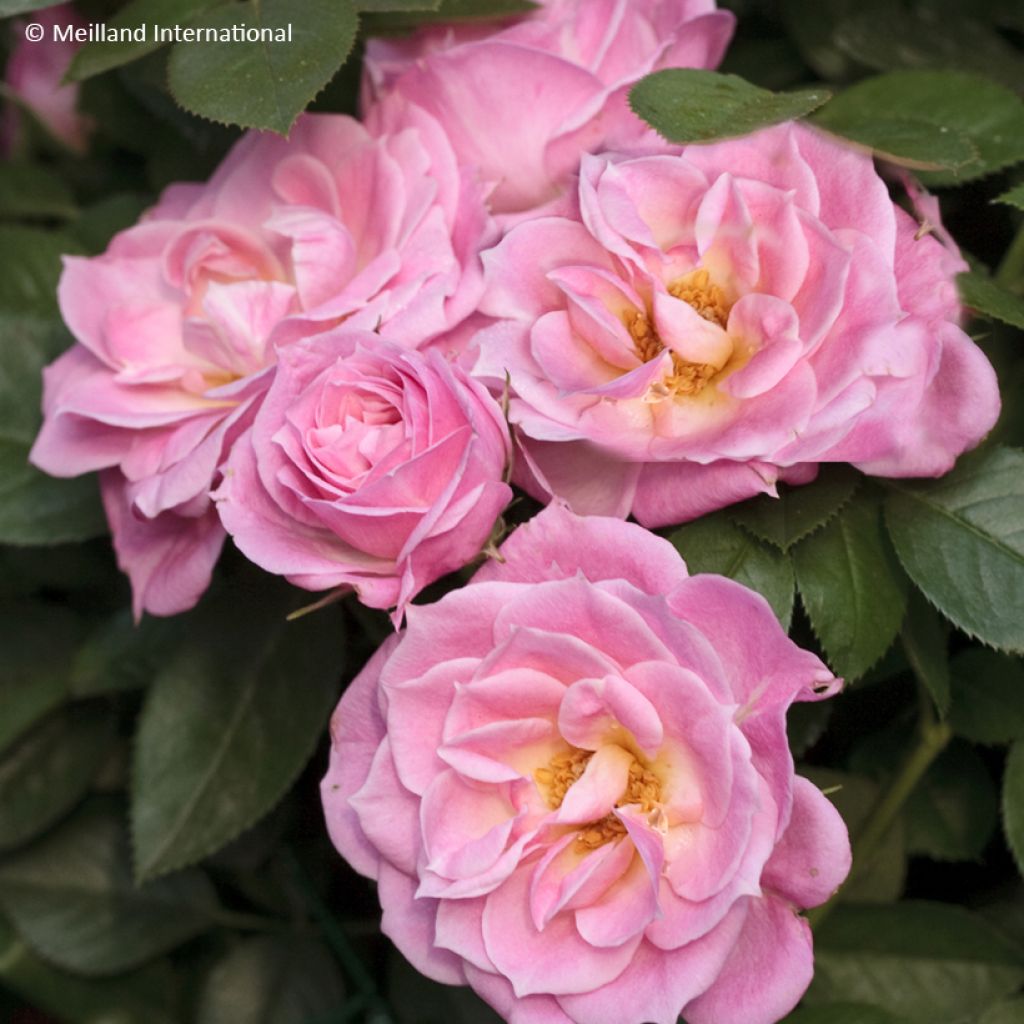

Rosa x polyantha 'Meirivoui' BELLE SYMPHONIE® - Rosier Belle Symphonie, Rosier Carefree Days, Rosier Carefree Days
Rosa x polyantha 'Meirivoui' BELLE SYMPHONIE® - Rosier Belle Symphonie, Rosier Carefree Days, Rosier Carefree Days
Rosa x polyantha 'Meirivoui' BELLE SYMPHONIE®
Rosier Belle Symphonie, Rosier Carefree Days, Rosier Carefree Days
Special offer!
Receive a €20 voucher for any order over €90 (excluding delivery costs, credit notes, and plastic-free options)!
1- Add your favorite plants to your cart.
2- Once you have reached €90, confirm your order (you can even choose the delivery date!).
3- As soon as your order is shipped, you will receive an email containing your voucher code, valid for 3 months (90 days).
Your voucher is unique and can only be used once, for any order with a minimum value of €20, excluding delivery costs.
Can be combined with other current offers, non-divisible and non-refundable.
Why not try an alternative variety in stock?
View all →This plant carries a 24 months recovery warranty
More information
We guarantee the quality of our plants for a full growing cycle, and will replace at our expense any plant that fails to recover under normal climatic and planting conditions.

Does this plant fit my garden?
Set up your Plantfit profile →
Description
The Belle Symphonie® Miniature Rose is a refined variety that charms with its compact habit and abundant flowering. Perfect for brightening up balconies, patios, and rockeries, it produces a multitude of small semi-double flowers in a delicate pastel pink, which elegantly contrast with its glossy dark green foliage. Its continuous flowering from May until the first frosts ensures a profusion of flowers throughout the season. Highly disease-resistant, this rose requires minimal maintenance and is ideal for beginner gardeners or those looking for a floriferous plant that is easy to grow in pots or in the ground.
The Belle Symphonie® 'Meirivoui' Miniature Rose belongs to the Rosaceae family. It is derived, among others, from the (x) polyantha rose, a highly floriferous bush rose that produces clustered flowers. It was developed by Meilland in 1996 and is also marketed abroad under the name Carefree Days. It is prized for its robustness and ability to produce continuous flowering on a compact bush. The bushy and ramified habit of the Belle Symphonie® enables it to reach a height of 40 to 50 cm with a similar spread, forming a delightful cushion of greenery and blooms. Formed of 17 to 25 petals, its semi-double flowers measure about 4 cm in diameter and cluster in inflorescences of 2 to 5 flowers per stem. They open to reveal a slightly deeper centre, creating an effect of perspective and softness. The bush's deciduous foliage, typical of roses, means that it fall in winter before returning in spring. Its leaves are small, dentate, and a glossy medium green, adding attractive density to the plant. Its fine, ramified stems bear a few discreet thorns. This rose also stands out for its continuous flowering which begins in May and continues until the frosts. This floriferous character makes it an excellent choice for gardeners wanting to enjoy blooms for several months. Its light scent is more than compensated by its soft colour scheme and its long flowering period.
The 'MeIrivoui' rose is an easy-to-grow variety ideal for those seeking a decorative yet undemanding plant. It thrives in rich, well-drained soil in a sunny exposure, though it also tolerates partial shade. This miniature rose pairs beautifully with other dwarf roses, low-growing perennial plants like campanulas or hardy geraniums, or even light grasses for a lovely contrast in textures. Planted in borders, beds, or pots, it will add a delicate, romantic touch that will enhance small spaces. Pair it with ground cover roses, hardy geraniums, nepetas, snapdragons, foxgloves, or hardy salvias.
Plant habit
Flowering
Foliage
Botanical data
Rosa
x polyantha
'Meirivoui' BELLE SYMPHONIE®
Rosaceae
Rosier Belle Symphonie, Rosier Carefree Days, Rosier Carefree Days
Rosa BELLE SYMPHONIE, Rosa 'Meirivoui' CAREFREE DAYS
Cultivar or hybrid
Other Dwarf and mini Roses
View all →Planting and care
Belle Symphonie roses prefer a sunny position (at least 4 to 5 hours of sunlight per day) but sheltered from the harsh midday sun and strong winds. They thrive in loose, well-drained, and fertile soil. They will adapt to any garden provided that the ground is well-prepared and sufficiently rich. To plant your rose, work the soil to a depth of 25 cm, breaking it up finely, and place a base fertiliser such as dried blood or dehydrated horn at the bottom of the planting hole. Position your plant after removing it from its pot, covering the top of the root ball with 3 cm of soil, backfill, and water thoroughly to eliminate any air pockets. During dry spells, water regularly for a few weeks to encourage root establishment. Also, remember to feed your rose with a special rose fertiliser to stimulate flowering.
Roses often develop spots or look unsightly by late summer, but this does not affect their growth. These spots are not harmful to the plant; it's a natural phenomenon. Follow all our advice to remedy this and read our article: Help: My Roses Have Spots
Planting period
Intended location
Care
Planting & care advice
This item has not been reviewed yet - be the first to leave a review about it.
Similar products
Haven't found what you were looking for?
Hardiness is the lowest winter temperature a plant can endure without suffering serious damage or even dying. However, hardiness is affected by location (a sheltered area, such as a patio), protection (winter cover) and soil type (hardiness is improved by well-drained soil).

Photo Sharing Terms & Conditions
In order to encourage gardeners to interact and share their experiences, Promesse de fleurs offers various media enabling content to be uploaded onto its Site - in particular via the ‘Photo sharing’ module.
The User agrees to refrain from:
- Posting any content that is illegal, prejudicial, insulting, racist, inciteful to hatred, revisionist, contrary to public decency, that infringes on privacy or on the privacy rights of third parties, in particular the publicity rights of persons and goods, intellectual property rights, or the right to privacy.
- Submitting content on behalf of a third party;
- Impersonate the identity of a third party and/or publish any personal information about a third party;
In general, the User undertakes to refrain from any unethical behaviour.
All Content (in particular text, comments, files, images, photos, videos, creative works, etc.), which may be subject to property or intellectual property rights, image or other private rights, shall remain the property of the User, subject to the limited rights granted by the terms of the licence granted by Promesse de fleurs as stated below. Users are at liberty to publish or not to publish such Content on the Site, notably via the ‘Photo Sharing’ facility, and accept that this Content shall be made public and freely accessible, notably on the Internet.
Users further acknowledge, undertake to have ,and guarantee that they hold all necessary rights and permissions to publish such material on the Site, in particular with regard to the legislation in force pertaining to any privacy, property, intellectual property, image, or contractual rights, or rights of any other nature. By publishing such Content on the Site, Users acknowledge accepting full liability as publishers of the Content within the meaning of the law, and grant Promesse de fleurs, free of charge, an inclusive, worldwide licence for the said Content for the entire duration of its publication, including all reproduction, representation, up/downloading, displaying, performing, transmission, and storage rights.
Users also grant permission for their name to be linked to the Content and accept that this link may not always be made available.
By engaging in posting material, Users consent to their Content becoming automatically accessible on the Internet, in particular on other sites and/or blogs and/or web pages of the Promesse de fleurs site, including in particular social pages and the Promesse de fleurs catalogue.
Users may secure the removal of entrusted content free of charge by issuing a simple request via our contact form.
The flowering period indicated on our website applies to countries and regions located in USDA zone 8 (France, the United Kingdom, Ireland, the Netherlands, etc.)
It will vary according to where you live:
- In zones 9 to 10 (Italy, Spain, Greece, etc.), flowering will occur about 2 to 4 weeks earlier.
- In zones 6 to 7 (Germany, Poland, Slovenia, and lower mountainous regions), flowering will be delayed by 2 to 3 weeks.
- In zone 5 (Central Europe, Scandinavia), blooming will be delayed by 3 to 5 weeks.
In temperate climates, pruning of spring-flowering shrubs (forsythia, spireas, etc.) should be done just after flowering.
Pruning of summer-flowering shrubs (Indian Lilac, Perovskia, etc.) can be done in winter or spring.
In cold regions as well as with frost-sensitive plants, avoid pruning too early when severe frosts may still occur.
The planting period indicated on our website applies to countries and regions located in USDA zone 8 (France, United Kingdom, Ireland, Netherlands).
It will vary according to where you live:
- In Mediterranean zones (Marseille, Madrid, Milan, etc.), autumn and winter are the best planting periods.
- In continental zones (Strasbourg, Munich, Vienna, etc.), delay planting by 2 to 3 weeks in spring and bring it forward by 2 to 4 weeks in autumn.
- In mountainous regions (the Alps, Pyrenees, Carpathians, etc.), it is best to plant in late spring (May-June) or late summer (August-September).
The harvesting period indicated on our website applies to countries and regions in USDA zone 8 (France, England, Ireland, the Netherlands).
In colder areas (Scandinavia, Poland, Austria...) fruit and vegetable harvests are likely to be delayed by 3-4 weeks.
In warmer areas (Italy, Spain, Greece, etc.), harvesting will probably take place earlier, depending on weather conditions.
The sowing periods indicated on our website apply to countries and regions within USDA Zone 8 (France, UK, Ireland, Netherlands).
In colder areas (Scandinavia, Poland, Austria...), delay any outdoor sowing by 3-4 weeks, or sow under glass.
In warmer climes (Italy, Spain, Greece, etc.), bring outdoor sowing forward by a few weeks.































